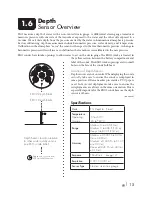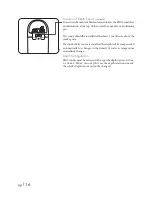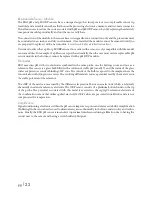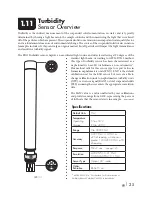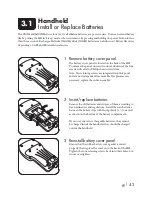
pg
|
28
Install/Remove Sensors
EXO sensors have identical connectors and identify themselves via onboard firmware; therefore, users can
install any probe into any universal sonde port. The exception is the wiper for the EXO2 sonde, which must
be installed in the central Port 7. Individual ports are physically identified by an engraved number on the
sonde bulkhead. Although the probes are wet-mateable, users should clean, lubricate, and dry the sonde and
sensors connectors prior to installation or service, when possible.
1 Remove probe or port plug.
Remove the calibration cup and sensor guard from the
sonde. Place the sonde on a clean, flat surface and prevent
it from rolling. Remove port plugs by pulling straight out
and place on a clean surface.
If removing a sensor, use the probe tool in the locking
nut and rotate counterclockwise to loosen. Pull the probe
straight out of the port and place on a clean surface.
Remove hydration caps or buffer bottles on probes. Wipe
dry with a clean, lint-free cloth.
2 Clean port and install sensor.
Visually inspect the port for contamination. If the port
is dirty or wet, clean it with a clean, lint-free cloth or
compressed air. Apply a light coat of Krytox grease to the
rubber mating surfaces of the connector.
Insert the sensor into the port by properly aligning the
connectors’ pins and sleeves (male and female contacts);
then press them firmly together.
3 Tighten locking nut.
Taking care not to cross-thread the grooves, finger-tighten
the locking nut clockwise. When the nut is seated against
the bulkhead, tighten it with probe tool until snug. Once
sensors or plugs are installed, reinstall the sensor guard to
protect sensors from impact damage.
Take care not to twist the probe body when tightening
and loosening the locking nut. Excessive twisting of the
probe can damage the connector and is not covered under
warranty.
A
2.2


